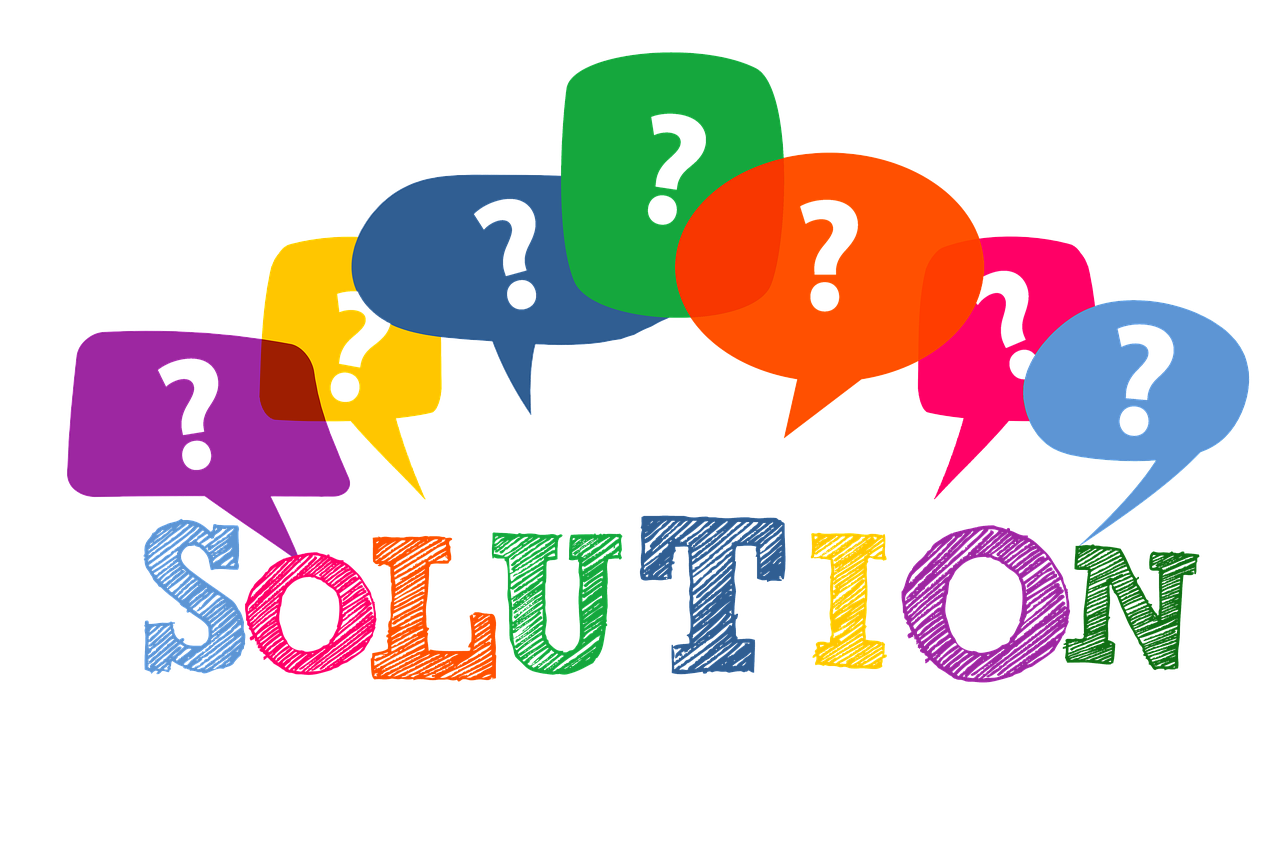30 Days to Emotional Awareness & Wellness Challenge
- By Dr. Shené Marsh-Beckford
- •
- 10 Oct, 2018
Day 9: Finding Balance

If you took time to complete the free strengths assessments, it’s likely you’ve gained a better understanding of where your talents are and how you can leverage them to facilitate your emotional awareness and wellness. The High 5 Test discloses five top abilities and the VIA Assessment compiles a customized profile of 24 character strengths. When combined, these profiles provide a comprehensive overview and a good starting place for understanding what makes each of us unique.
Our talents unveil our strengths, and our strengths help us maximize our performance, but relying too heavily on the information our strengths provide could be harmful and lead to additional blind spots. Forbes Coaches Council (2017) warned that being dependent on any particular strength or set of strengths potentially leads to unconscious bias and the dismissal of alternative solutions that are viable. They also suggested hyperfocusing on strengths prevents us from seeking others’ perspectives and using higher order thinking, creativity, and savvy, which ultimately undermines our intentions and reduces outcome quality.
Therefore, staying aware and striking a balance are key to avoid these potential obstacles. If you have not already done so, take the VIA Assessment. Using the results provided, make note of the last five strengths presented and compare them with the top five. Identify techniques you can use to leverage both.
My VIA Assessment results, for example, revealed that gratitude is one of my top strengths, but spirituality comes less naturally. While I initially found this result puzzling, to say the least, the dynamic between these two strengths was also intriguing. With a little research the relationship between them became more evident and strategies for development were easily identified.
Here’s what I learned: Gratitude, in and of itself, is a form of spirituality (Romero, 2017). In another article, Chopra (2015) discussed the spiritual experience we have when we feel and express gratitude as well as shared study findings that suggest gratitude has a direct and favorable influence on our spirituality and well-being. Some of the interventions used to enhance spirituality in the study included: inspirational journaling, mind-body exercises, relaxation techniques, and activities in natural settings.
Without going through the process of exposing our strengths and areas where we need further development, a renewed sense of awareness is intangible, and change is unattainable. Investing time for self-discovery in this area allows us to make the adjustments necessary for channeling our talents, appreciating our limitations, and more importantly, improving our emotional awareness and wellness.
References
Chopra, D. (2015, September 3). Sowing seeds of gratitude to cultivate wellbeing. Retrieved from https://www.huffingtonpost.com/deepak-chopra/sowing-seeds-of-gratitude_b_8078426.html
Forbes Coaches Council. (2017, October 19). Don’t let your strengths become a weakness. Retrieved from https://www.forbes.com/sites/forbescoachescouncil/2017/10/19/dont-let-your-strength-become-a-weakness/#7796d52013f1
Romero, L. E. (2017, November 22). Gratitude: The ultimate spiritual practice (A Thanksgiving special). Retrieved from https://www.forbes.com/sites/luisromero/2017/11/22/gratitude-the-ultimate-spiritual-practice-a-thanksgiving-special/#61d735c82706


Emotional intelligence (EI) is a factor affecting various personal and professional life aspects. It is defined as the capability to perceive, understand, manage, and apply feelings effectively. It is an indispensable requisite for emotional well-being and psychological safety, as well as overall effective performance in the workplace. This blog post explains how EI influences those aspects by emphasizing its importance in maintaining a productive and friendly work atmosphere.
Emotional Well-Being
Emotional well-being is an important component of mental health in general; EI makes great contribution to its improvement. A person with high EI knows how to perceive and control his or her emotions, which helps to handle stress and develop resilience.Key elements of how EI contributes to emotional well-being will involve:
- Stress Management: High EI persons can recognize and manage their feelings when they are stressed. They are, therefore, able to keep calm and composed, reducing the effects of stress on their mental life.
- Positive Attitude: TIndividuals who have high EI happen to be positive in outlook. They also reframe negative experiences, focus on the positive aspects, and develop a more optimistic mindset, which consequently enhances their general emotional well-being.
- Resilience: EI helps them in developing resilience against emotional challenges. Since they manage their emotions well, they bounce back from setbacks faster and maintain good mental health well into the future.
- Mental Health: The ability to manage emotions fosters a reduction in anxiety, depression, and burnout. Individuals with high EI thus become resilient to emotional challenges, which is a guarantee of good mental health and well-being.
Psychological Safety
The concept of psychological safety at work is defined as "a feeling that one will not be punished or penalized for expressing one's self". High EI significantly enhances psychological safety in the workplace since it aids in empathy, effective communication, and resolving interpersonal conflicts.Key points to remember:
- Empathy: High EI people can understand and share the feelings of others. The empathy in them allows one to give immense support and inclusion to the employees at work by making them feel appreciated and recognized.
- Effective Communication: EI amplifies communication art, hence the individual can express and listen to others. In that respect, effective communication reduces misunderstandings and builds trust in teamwork.
- Conflict Resolution: Individuals high on EI are capable of resolving conflicts. They can handle the emotional dynamics, mediate disputes, and find mutually constructive solutions that help create a harmonious work environment.
- Inclusive Culture: Leaders and employees with high EI will be able to recognize and engage with emotional cues to create an inclusive culture where everyone can safely share their thoughts and ideas without being persecuted.
Workplace Performance
EI is considered one of the major predictors of workplace performance. Individuals with high EI understand how to handle their emotions and take care of the emotions of others, which improves teamwork, and collaboration, and hence enhances their performance at work. The essential elements of how EI can impact performance at workplaces include but are not limited to the following aspects:
- Teamwork: High-EI individuals could work in a team by empathizing with team players and influencing team dynamics based on the same. The art of doing this strengthens teamwork and allows groups to maintain more cohesive and productive atmospheres.
- Collaboration: EI leads to collaboration. People with high EI know how to treat interpersonal relationships, establish functional relationships, and work in various kinds of teams.
- Productivity: The efficient treatment of emotions significantly promotes better concentration and focus on work. High EI employees are less likely to be distracted by emotional disturbances, which raises their productivity level.
- Interpersonal Dynamics: High emotional intelligence helps an individual understand and manage the dynamics of interpersonal relationships. This minimizes the probability of disputes and misunderstandings. This ability develops better general organizational performance by creating an optimistic and collaborative atmosphere to work in.
Emotional Intelligence is part of emotional well-being, psychological safety, and work performance. High EI individuals possess an excellent level of handling stress, keeping a positive outlook on life, and building resilience; therefore, they function well for their mental health and fitness. In the workplace, EI nurtures empathy, effective communication, and conflict resolution-that is, a psychologically safe environment where employees can prosper. Additionally, due to improved teamwork, collaboration, and productivity, EI greatly enhances performance at work. As organizations continue to recognize the value of EI, investing in its development will result in more engaged, resilient, and high-performing employees and teams.

EI has received considerable attention within the disciplines of psychology, organizational behavior, and leadership studies. Despite its reportedly popular influence on both personal and professional success, the theoretical landscape of EI remains diverse and keeps on evolving. The present article overviews the current theoretical diversity in the EI paradigm and emphasizes effective strategies for assessing and developing EI in various contexts.
In this article, we revisit the theoretical variety in the EI paradigm by re-examining the distinct contributions and implications of each of the major models. We go on to detail good practices for the assessment and development of EI, reflecting current research and practical examples. The article aims to arrive at an advanced view of EI and its applications which will helpably shed light on and guide the efforts of researchers, educators, and practitioners toward furthering emotional intelligence in diverse settings.Theoretical Diversity in Emotional Intelligence
Mayer and Salovey's Ability Model
- Views EI as a facet of cognitive intelligence involved in the processing of emotional information.
- Four-branch model:Perceiving emotions, using emotions to facilitate thought, understanding emotions, and managing emotions.
- Intends to make an objective measurement of EI through tasks and problem-solving activities.
Goleman's Mixed Model
- Combines emotional and social competencies.
- Five components: Self-awareness, self-regulation, motivation, empathy, and social skills.
- Has a greater focus on the practical utility of EI in leadership and organizational settings.
Bar-On's Trait Model
- Conceptualizes EI asa set of emotional and social competencies that determine a person's well-being and harmony with other people.
- Includes personality traits; a strong emphasis is placed on the role of EI in maintaining good mental health.
- Relies on self-report questionnaires for the evaluation of EI.
Petrides' Trait EI Model
- Refers to a constellation of emotional self-perceptions located at the lower levels of personality hierarchies.
- The subjective nature of emotional experiences makes many of them difficult to operationalize or quantify.
- Self-report measures tap into people's perceptions of their emotional abilities.
Achieving Impactful Outcomes
Given the importance of EI in various domains,best practices should be instituted for assessing and developing EI. Truly effective assessment strategies will be able to capture the multi-dimensional nature of EI through the use of self-report measures in conjunction with performance-based tests and feedback from others. Conversely, developmental programs should be tailored to needs at the individual and group levels through the use of personal coaching, training sessions, and organization-level interventions.
Best Practices for Assessing Emotional Intelligence
Multi-Method Approaches
- Combine self-report measures with performance-based tests and 360-degree feedback.
- Ensures a comprehensive assessment of the different facets of EI.
Context-Specific Assessments
- Ensure that assessments are performed in specific contexts and for specific goals of organizations or individuals.
- Recognize that the expression of EI changes with environment and role.
Continuous and Developmental Assessment
- Emphasizes ongoing assessment over one-shot assessments.
- Integrates regular feedback and plans for development on EI.
Best Practices forDeveloping Emotional Intelligence
Individual Development Programs
- Individual coaching and training in selected EI competencies.
- Mindfulness practices, emotional regulation exercises, reflective practices.
Group and Team Development
- Workshops and training programs with groups/teams to enhance collective EI.
- Activities that encourage team bonding, empathy, and good communication.
Integration into Organizational Culture
- Embed the development of EI into the DNA of the core values and practices of the organization.
- Incentivize the leadership to model high EI behaviors and support emotionally intelligent workplaces.
Only by implementing best
practices with regard to assessment and development will the full
potential underlying the individuals and groups come forth. Using
multi-method approaches, assessments fitted to specific contexts,
placing a continuous emphasis on development, and integrating EI into
the culture of organizations are ways in which practitioners can
effectively and sustainably implement their EI initiatives. These
efforts will go toward not only the personal and professional success of
an individual but also the building of empathetic, resilient,
high-performing organizations and communities. Inasmuch as the
theoretical underpinning and practical applications are pursued, the
field of EI will continue to grow, affording valuable insights and means
through which emotional intelligence can be fostered.
